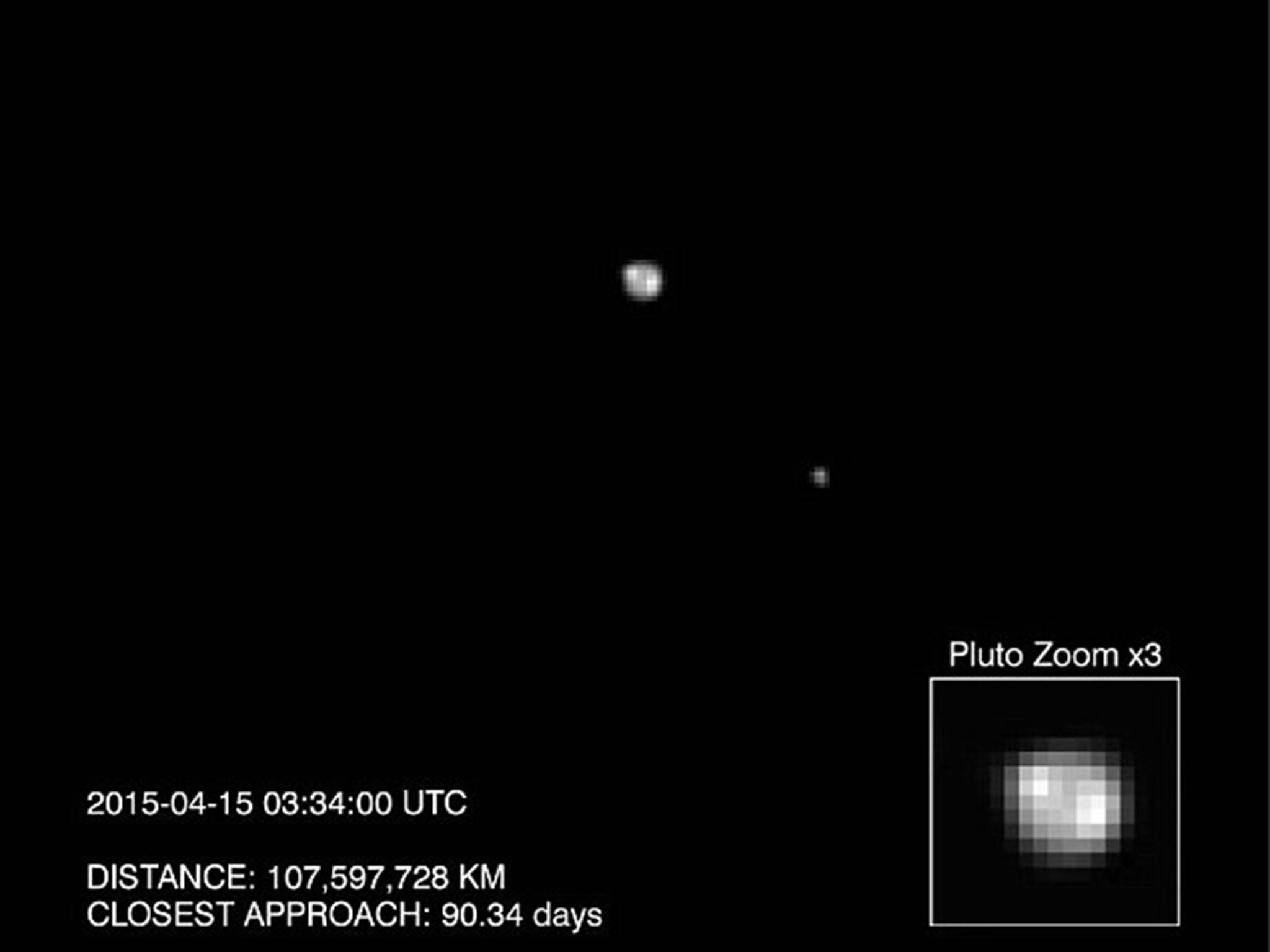Image of Pluto from Nasa's New Horizons probe reveals planet may have polar cap
The New Horizon's craft took the images from over 100million km away

Your support helps us to tell the story
From reproductive rights to climate change to Big Tech, The Independent is on the ground when the story is developing. Whether it's investigating the financials of Elon Musk's pro-Trump PAC or producing our latest documentary, 'The A Word', which shines a light on the American women fighting for reproductive rights, we know how important it is to parse out the facts from the messaging.
At such a critical moment in US history, we need reporters on the ground. Your donation allows us to keep sending journalists to speak to both sides of the story.
The Independent is trusted by Americans across the entire political spectrum. And unlike many other quality news outlets, we choose not to lock Americans out of our reporting and analysis with paywalls. We believe quality journalism should be available to everyone, paid for by those who can afford it.
Your support makes all the difference.Pluto may have a polar ice cap, according to images taken from Nasa’s New Horizons probe around three weeks ago.
The pictures taken by the craft’s Lorri telescope from a distance of over 100 million km appear to show markings and different shades of light on the planet’s surface, indicating that the planet may support nitrogen ice.
“Even if you had similar images of Mercury or even Mars, for example, you would not see the same kinds of big surface units as you do here on Pluto. And that's really promising for the imagery as we get closer and closer.”
Last month, the probe took the first colour photos of the planet that orbits the sun almost 3billion miles from earth.
The probe, which is due to pass by Pluto on 14 July, will complete the reconnaissance of all the "classic nine” planets in the solar system and give scientists a unique insight into the "dwarf planet".
The last of the solar system's planets to be fully surveyed for the first time was Neptune in the 1980s.
John Grunsfeld, the associate administrator for NASA's Science Mission Directorate in Washington, said: “As we approach the Pluto system we are starting to see intriguing features such as a bright region near Pluto's visible pole, starting the great scientific adventure to understand this enigmatic celestial object.”

“As we get closer, the excitement is building in our quest to unravel the mysteries of Pluto using data from New Horizons.”
The probe still has 60 million miles to travel before it reaches Pluto but will be unable to orbit the planet due to the speed it will be travelling at.
Join our commenting forum
Join thought-provoking conversations, follow other Independent readers and see their replies
Comments